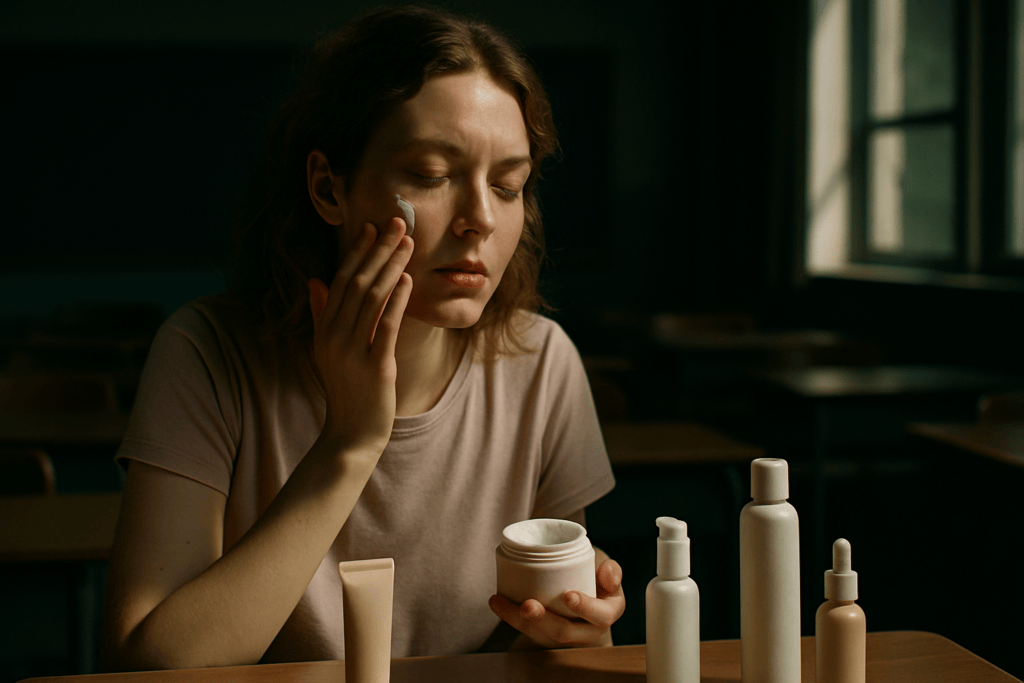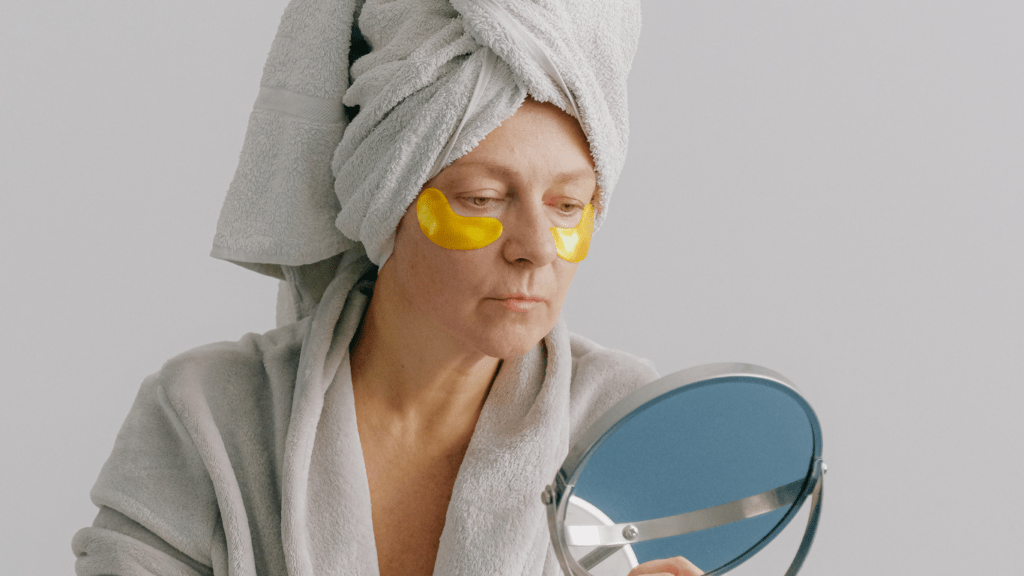Understanding Your Skin Type
Identifying your skin type forms the basis of a successful skincare routine. Knowing whether you have oily, dry, combination, or sensitive skin helps tailor products and practices to your needs, enhancing results.
Oily Skin
Oily skin often produces excess sebum, leading to a shiny appearance and enlarged pores. Acne and blackheads might be common issues. Using non-comedogenic products and regular exfoliation can help manage oil production and maintain clear skin.
Dry Skin
Dry skin lacks moisture, causing flakiness, tightness, and sometimes itchiness. Hydrating products like hyaluronic acid and moisturizing creams with ceramides can alleviate dryness. Avoiding harsh soaps and hot water can also preserve natural oils.
Combination Skin
Combination skin features both oily and dry areas. Typically, the T-zone (forehead, nose, and chin) is oily, while the cheeks remain dry. Balancing products that hydrate dry areas while controlling oil in the T-zone can address this dual nature effectively.
Sensitive Skin
Sensitive skin reacts easily to environmental factors and certain products, leading to redness, itching, and irritation. Hypoallergenic and fragrance-free products are ideal for minimizing reactions. A simple skincare routine helps prevent aggravating sensitive skin.
Assessing Your Skin Type
Performing a simple test can help determine your skin type. After cleansing, leave your skin bare for an hour. Observe the feel and look of your skin to identify oily, dry, combination, or sensitive traits. Adapting your regimen based on these observations ensures optimal skin health.
Essential Skincare Routine

Achieving flawless skin demands a consistent and tailored skincare routine. Below, I outline the three key steps: cleansing, toning, and moisturizing.
Cleansing
Cleansing removes impurities, makeup, and excess oil. Use a cleanser suitable for your skin type. For oily skin, opt for a foaming cleanser that controls excess oil. For dry skin, a hydrating cleanser helps retain moisture. Cleanse twice daily, morning and night, using lukewarm water to open pores and remove buildup.
Toning
Toning balances the skin’s pH and tightens pores. Choose alcohol-free toners to avoid dryness. For combination skin, use witch hazel or rose water. Apply toner with a cotton pad after cleansing. This step preps the skin for better absorption of subsequent products.
Moisturizing
Moisturizing is crucial for hydrating and protecting the skin barrier. For oily skin, select a lightweight, oil-free moisturizer. For dry skin, choose a thicker, nourishing cream. Apply moisturizer twice daily after toning. This locks in hydration and keeps the skin supple.
Advanced Skincare Tips
After nailing the basics like cleansing, toning, and moisturizing, it’s time to delve into more advanced skincare steps. I’ll share expert advice on how to elevate your routine for truly flawless skin.
Exfoliation
Exfoliation removes dead skin cells and promotes cell renewal. Weekly exfoliation unclogs pores and brightens my complexion. I’ll choose from physical exfoliants, like scrubs containing fine particles, or chemical exfoliants, such as those with alpha hydroxy acids (AHAs) or beta hydroxy acids (BHAs). Physical exfoliants should be used gently to prevent irritation, especially for sensitive skin. In contrast, chemical exfoliants can penetrate deeper layers, offering more significant benefits over time. For example, AHAs like glycolic acid work well for dry skin, while BHAs like salicylic acid are great for oily, acne-prone skin.
Serums and Treatments
Serums and treatments target specific skin concerns more effectively than general skincare steps. These concentrated formulations deliver active ingredients deeper into my skin. Vitamin C serums brighten skin and reduce hyperpigmentation. Retinoids, derived from Vitamin A, combat fine lines and wrinkles. For hydration, hyaluronic acid serums prove indispensable, especially for dry skin types. Niacinamide minimizes pores and regulates oil production, making it perfect for combination or oily skin. Incorporating these serums and treatments into my routine ensures a tailored approach to achieving flawless skin.
Sun Protection
Sun protection is critical in any skincare routine. Daily use of broad-spectrum sunscreen with at least SPF 30 protects my skin from harmful UVA and UVB rays. This prevents premature aging, sunburn, and reduces the risk of skin cancer. Even on cloudy days or indoors, wearing sunscreen is vital. For added convenience, I look for sunscreens that combine other skincare benefits, such as moisturizers or antioxidants. Regular reapplication throughout the day, especially after sweating or swimming, ensures continuous protection.
Following these advanced skincare tips encourages healthier, more radiant skin. By integrating exfoliation, targeted serums, and diligent sun protection into my routine, I elevate my skincare game to achieve the desired flawless complexion.
Lifestyle Factors for Flawless Skin
Addressing certain lifestyle factors is crucial for achieving flawless skin. These factors include diet, hydration, and sleep hygiene.
Diet and Nutrition
Healthy skin starts with a balanced diet. Consuming a variety of fruits, vegetables, lean proteins, and whole grains provides essential vitamins and minerals. For example, vitamin C from citrus fruits supports collagen production, while omega-3 fatty acids from fish reduce inflammation. I avoid processed foods and excessive sugar, which can lead to breakouts and dull skin.
Hydration
Keeping skin hydrated is essential. Drinking at least eight 8-ounce glasses of water daily ensures that skin cells remain plump and healthy. Hydration from the inside complements topical moisturizers. In dry climates or during intense physical activity, I up my water intake to compensate for additional fluid loss.
Sleep Hygiene
Quality sleep significantly impacts skin health. During sleep, skin undergoes repair and regeneration processes. Aiming for 7-9 hours of sleep each night allows these processes to function optimally. I maintain a regular sleep schedule and create a restful environment by reducing light and noise. Avoiding screens before bedtime helps improve sleep quality, supporting better skin health.
Common Skincare Mistakes to Avoid
- Skipping Sunscreen
Neglecting sun protection accelerates skin aging and increases the risk of skin cancer. Apply a broad-spectrum sunscreen with at least SPF 30 daily, even on cloudy days. - Over-Exfoliating
Frequent exfoliation irritates the skin and causes inflammation. Limit exfoliation to 1-3 times per week, depending on your skin type. Use gentle exfoliants such as AHAs or BHAs for sensitive skin. - Using Too Many Products
Layering multiple products clogs pores and causes irritation. Stick to a simple routine: cleanser, moisturizer, and sunscreen. Introduce new products gradually to gauge their impact. - Not Removing Makeup Before Bed
Sleeping with makeup on clogs pores and leads to breakouts. Always cleanse your face before bed to remove makeup, dirt, and oil. - Ignoring the Neck and Chest
The neck and chest areas are prone to aging signs like the face. Include these areas in your skincare routine by applying moisturizer and sunscreen. - Using Harsh Cleansers
Harsh cleansers strip the skin of natural oils, causing dryness and irritation. Choose a gentle, pH-balanced cleanser that suits your skin type. - Touching Your Face Frequently
Touching transfers bacteria and oil from your hands to your face, leading to breakouts. Avoid touching your face and always wash your hands before applying skincare products.
By avoiding these common skincare mistakes, individuals can enhance their skincare routine and achieve healthier, flawless skin.


 Creative Director at Divine Glamour Trail, is the visionary behind the platform, which is dedicated to bringing readers the latest trends in hairstyles, beauty, and skincare. With a passion for timeless fashion and expert style guidance, George provides tips, secrets, and updates that empower individuals to enhance their personal style. His platform is a go-to source for anyone looking to stay ahead in the fashion game, combining modern trends with timeless elegance to help readers feel confident and look their best.
Creative Director at Divine Glamour Trail, is the visionary behind the platform, which is dedicated to bringing readers the latest trends in hairstyles, beauty, and skincare. With a passion for timeless fashion and expert style guidance, George provides tips, secrets, and updates that empower individuals to enhance their personal style. His platform is a go-to source for anyone looking to stay ahead in the fashion game, combining modern trends with timeless elegance to help readers feel confident and look their best.
